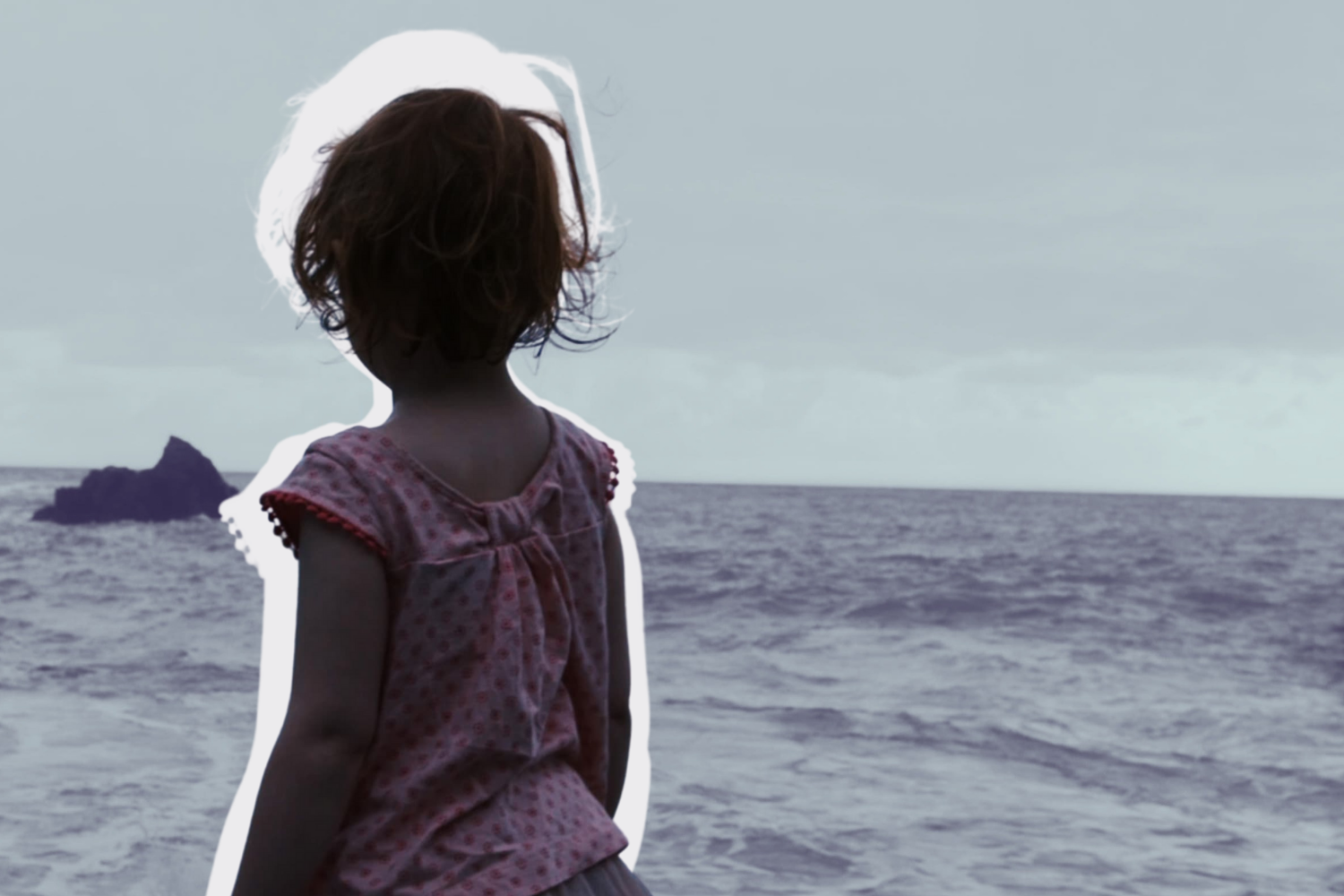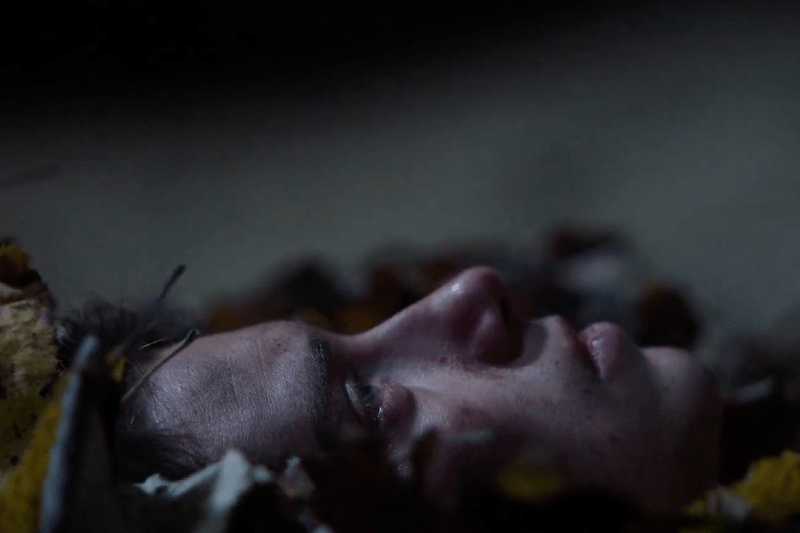Uterus Horror
‘Blue My Mind’ And The Relatability Of Mermaid Maturity
June 2nd, 2021 | By Molly Henery

In a genre typically considered “for the guys,” it’s time to give a nod to the ladies. Uterus Horror is a subgenre of horror films that focuses on the uniquely female experience of puberty and the act of coming into your sexuality, using horror elements to emphasize and/or act as a metaphor for that experience. These films are often ignored in theaters but quickly develop cult followings. Columnist Molly Henery, who named and defined the subgenre, tackles a new film each month and analyzes how it fits into this bloody new corner of horror.
Last month I dissected the teenage hell that is Jennifer’s Body. For May, it’s time to look at a different kind of adolescent nightmare. The film is Blue My Mind, a 2017 Swiss production that combines elements of Thirteen, Ginger Snaps, and The Thirteenth Year to tell a story of physical and emotional transformation.
Director Lisa Brühlmann (Killing Eve, Castle Rock) co-wrote Blue My Mind with Dominik Locher (Tempo Girl, Goliath). Mia (Luna Wedler) appears to be a typical young teenage girl. Shortly after her family moves to a new town, Mia begins to experience many changes. For the most part these changes are typical of a girl going through puberty, such as experiencing her first period and becoming sexually active. Yet, all the while, a much more bizarre change is taking place. As odd as it may sound, Mia is transforming into a mermaid. While the majority of Blue My Mind is a fairly straightforward coming-of-age drama, its focus on the body pushes it into Uterus Horror territory.
It all begins when Mia’s family moves to a new apartment. On her first day of school, Mia notices a group of kids who appear to be the more mature, popular, rebellious kids in class. It’s immediately evident she wants to befriend these people. At first, the group rejects and mocks her because they believe Mia to be too immature. One of the boys in the group even asks if she’s ever had a period. Slowly but surely, Mia maneuvers her way into the clique. First by smoking, drinking, and stealing with the girls, then having sex for the first time with one of the boys. She goes from a sweet girl to a completely uncontrollable teenager in a short amount of time.
Much like the acclaimed film Thirteen, Blue My Mind gives a disturbing—yet all too accurate—portrayal of girlhood and the lengths we often go to in order to feel accepted. Much of Mia’s emotional journey is directly connected to the leader of the clique, Gianna (Zoë Pastelle Holthuizen). Mia’s desire to be accepted by Gianna blurs the lines between wanting to befriend someone, wanting to be someone, and wanting to date them. With all the hormones swirling around during puberty, it is often hard for young girls to differentiate between these feelings. As a result, Mia is willing to do just about anything to get close to Gianna, regardless of the consequences.
This aspect of the film is something that really hit home for me. I was someone who, in high school, wanted to simply be liked. Unfortunately, that meant doing a lot of truly stupid shit that I still regret to this day. While I was never one to really go to parties or drink, I was a depressed girl who had been taught by society that my worth was my body and that the only way to keep boys around, even just as friends, was to be a sexual object for them. When I think back on my high school days and the choices I made to feel accepted, I’m genuinely shocked I didn’t end up in a morgue. Sadly, far too many young girls go through this same experience, but very few filmmakers choose to make films about it because people would rather pretend it doesn’t happen.
In Blue My Mind, feeling like an outsider is just the status quo. Mia is an outcast at school because she is the new girl, arriving after friendships have already been formed. This is largely why she is so desperate to gain Gianna’s favor. Mia’s sense of being alone in the world only grows throughout the film, especially when she begins to gradually transform into a mermaid. She knows what’s happening to her isn’t what other girls go through, so she feels she has no one to relate to. Her changes even lead her to believe she was adopted since it is obvious her human-looking mother never went through the bizarre metamorphosis.
Mia acts out in two ways to combat this lonely feeling. The first is by trying to feel close to others. Whether befriending Gianna or having sexual encounters with strange men, Mia simply needs to feel connected to another human. The second way is by numbing herself. She drinks, she does drugs, and she even resorts to self-harm. Anything to distract her from her emotional anguish. This, unfortunately, is also something many women are familiar with.
Brühlmann and Locker make the tough subject matter in Blue My Mind more digestible for the masses by incorporating the mermaid transformation. The same day Mia gets her first period, she takes a bath to shave her legs and notices her toes have become webbed. After seeing the doctor and getting no help, she takes matters into her own hands by cutting the webbing with small scissors and putting bandages over the cuts.
The changes only become more drastic from there. Bruising appears down by her ankles and gradually works its way up her legs as the skin starts to slough off. Eventually, her belly button vanishes. As the changes come more rapidly, Mia is shown peeling what appears to be large scales off of her legs. Then, her legs finally start to fuse together in the middle. In a panic, Mia cuts her arm and passes out. When she awakes, her legs are no more. Instead, they have been replaced by a large mermaid tail.
While the word “mermaid” is never actually used in Blue My Mind, it seems to be a purposeful choice to have that be what Mia turns into. Historically, mermaids and the legends surrounding them convey these creatures as objects of sexual desire for men. They aren’t human, they are simply feminine things for sailors to gawk at and try to capture for their own purposes. This isn’t far from how young women are perceived by the men around them. Almost all the men Mia and Gianna encounter throughout the film only care about using the girls for sexual gain. While the film makes it obvious both girls are looked at by men in this way, the focus on Mia makes the parallel between girls and mermaid clear for the audience.
Blue My Mind has a story that is all too real, despite the fact that it has a mermaid transformation. I hope more women discover it; perhaps from reading this article, or maybe by stumbling upon it on Tubi or another streaming service. So many girls and women have gone through the same quest for acceptance as Mia, and so many have had this take them down a dangerous or destructive path. Having the protagonist turn into a creature often seen as a sexual object further solidifies her feeling of loneliness while at the same time emphasizing society’s views on women. Blue My Mind is a cautionary tale more audiences should pay attention to for the sake of all young girls.
Visit our Editorials page for more articles like this. Ready to support more original horror criticism? Join the Certified Forgotten Patreon community today.



